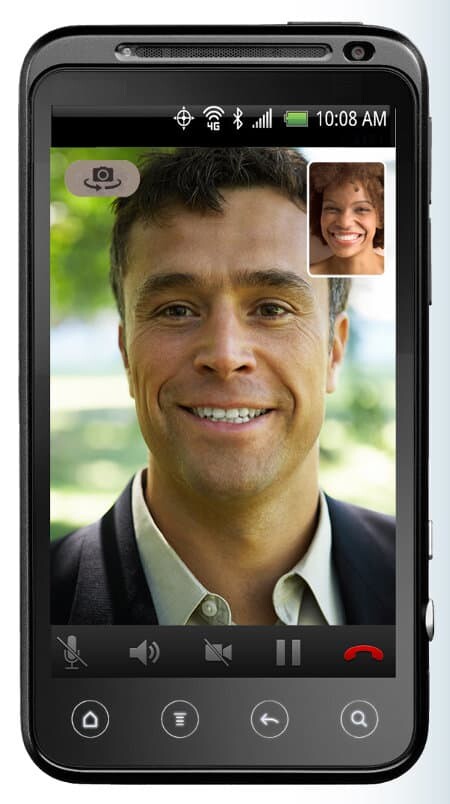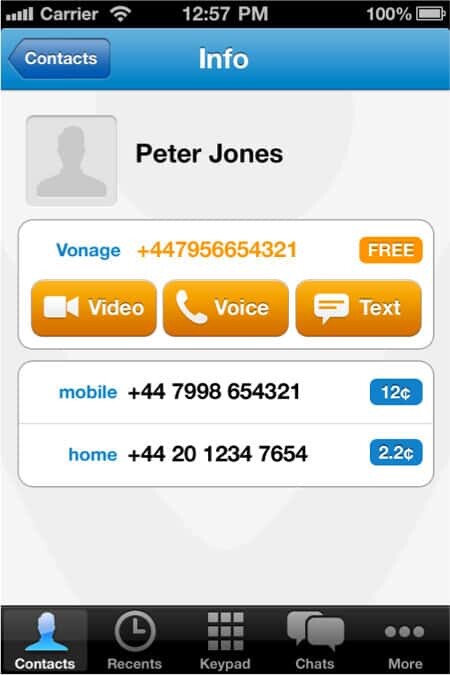Here’s how a service provider leverages WebRTC in his own network.
WebRTC is going to disrupt communications. One of the ways in which it is done is simply by using WebRTC’s components and modules in order to break new grounds with existing services. Vonage is one such example.
Vonage started out as an OTT player when that term wasn’t even coined. It uses SIP at its core and runs a phone service on top of broadband. Recently, they introduced a mobile client – one that uses WebRTC and adds video into the mix of their services.
 I met Sagi Dudai, GM and VP Mobile at Vonage a few weeks back, talking about WebRTC, how they have decided to wield its power inside Vonage and where they are headed with it. Obviously, I asked for an interview – one I can publish publicly – and to my heart’s content that just happened.
I met Sagi Dudai, GM and VP Mobile at Vonage a few weeks back, talking about WebRTC, how they have decided to wield its power inside Vonage and where they are headed with it. Obviously, I asked for an interview – one I can publish publicly – and to my heart’s content that just happened.
What is Vonage all about?
Vonage has been in business since 2001, and provides communications services connecting individuals through broadband-connected devices worldwide. Our technology serves approximately 2.3 million subscribers. Our most popular service is the Vonage World home phone service that provides flat-rate unlimited calling internationally.
In 2012, we released our free mobile app for iPhone and Android.
Where does WebRTC come into it?
We use WebRTC as our media library for our Vonage Mobile app. More specifically, we leverage WebRTC to capture and play audio and video; encode and decode audio and video; and send and receive network packets over the network.
You had to hook it up to an existing backend – how did you do that?
We use SIP to connect to our backend. Once the connection is achieved and both sides exchange SDPs and agree on the media parameters, we set them in WebRTC to start the media session.
What did you decide in the area of codecs?
We use iSAC and iLBC as our audio codecs and VP8 as our video codec to ensure the best quality on mobile devices while reducing transcoding on the backend.
You recently added video. How does that fit into your existing voice-only service?
Voice communications is certainly a big part of what we provide across our product lines. For Vonage Mobile, one thing that differentiates us is that we provide users with the ability to call any phone, not just app to app calling, and they can do that using their existing mobile number and address book. Our users value that ability. Users can also talk, text, share location and photos app to app. Adding video calling capabilities was a natural evolution. By utilizing WebRTC and VP8, we were able to ramp up our efforts for video calling in a relatively short timeframe. So now with Vonage Mobile, you can make audio and video calls between two mobile devices or just make low cost calls to any other voice line in the world.

Running WebRTC on mobile meant porting it. How did that go?
Very interesting. Especially in terms of optimizing it to mobile chipsets and networking.
Given the opportunity, what would you change in WebRTC?
We would love to see where WebRTC goes with mobile and integrate better with mobile devices. For instance, using the hardware implementation of the codecs that is available in the devices’ chipsets to provide higher quality media.
What’s next for Vonage?
We aim to be the leading communications company that provides value to people by offering them the freedom and flexibility to communicate with their friends and family wherever, whenever or however they choose. We are always innovating toward that goal. Mobile is an area of the business where the company will continue to allocate resources to drive growth and innovation, and we have several exciting features in development. We look forward to sharing more detail when the time is right.
–
The interviews are intended to give different viewpoints than my own – you can read more WebRTC interviews.

